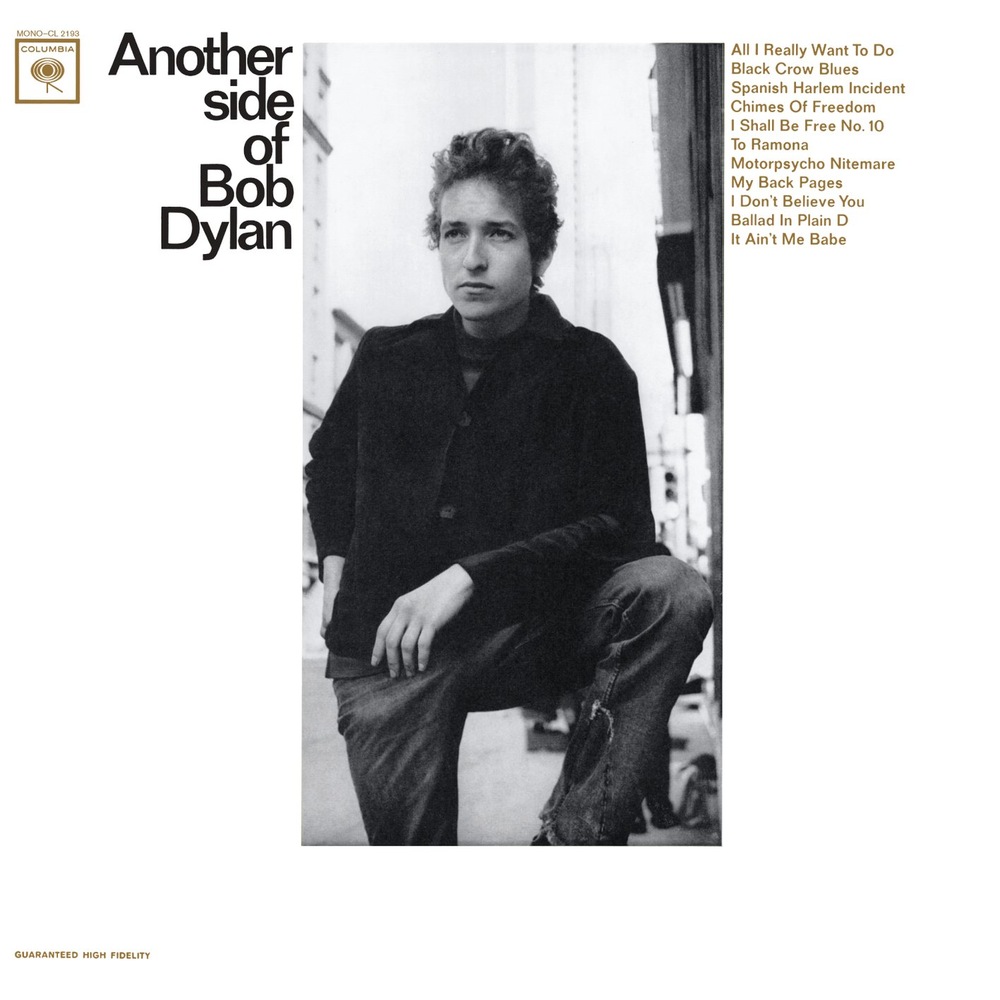Throwback Thursday: Bob Dylan’s ‘Another Side of Bob Dylan’
written by Shaun Lee
Ah, the good old days, when entire albums could be recorded in a night and released a few weeks later. It was this week in 1964 that Bob Dylan would enter Columbia studios in New York to record his least popular album of the 1960’s. Under the influence of a case of Beaujolais, Dylan would record a total of 14 cuts for Another Side, working into the wee hours of the morning. In the process he would single-handedly create a career for The Byrds, who would go on to record four of the tracks from Dylan’s session for their own debut. The influence of this record on the genesis of rock music can’t be understated; the thematic shift in the lyrical content of the album combined with Dylan’s increasing melodicism and pop sensibilities had a massive effect on what was to come. Consider that this record was released in the same year as the film Hard Days Night starring The Beatles, and you can get a good picture of the melding of influences that would inform the bulk of 60’s rock. Dylan and The Beatles were mutual fans; hearing I Want To Hold Your Hand would influence Dylan’s choice to go electric, while the fab four took Dylan’s lyrical sensibilities as a challenge to write more introspective and surreal songs. 60’s rock bands took the melding of these two titans and from it created something that combined the pop genius of the British Invasion with the lyrical inventiveness of Dylan’s poetry.
The actual album was highly undervalued at the time, rejected by consumers, critics and even Dylan himself to a degree. It isn’t hard to understand; besides the fact that these are great songs, the entire album is highly transitional in nature. Dylan almost seems a little self -conscious of his folkie tendencies on the record, but isn’t quite prepared yet to break away from the form. Many of the songs contained conform to the arrangements of much older traditional folk songs, and only some of the tracks (most notably Chimes of Freedom and My Back Pages, the unreleased demo of Mr. Tambourine Man) show the increased lyrical playfulness and surrealism that would categorize later 60’s albums. It wasn’t until The Byrds released this material in an electric form that audiences began to appreciate their full potential, and by that time Dylan himself had made the jump to rock and roll.
The folk community reacted with a predictable level of distaste towards this side of Bob. In an open letter printed in the folk magazine ‘Sing Out’ the editor calls Dylan out and accuses him of surrounding himself with yes men and giving in to the trappings of vanity. It’s a fair assessment in some ways, but given the way Dylan was treated as a golden calf by the folk community, his move to distance himself from the protest movement and engage in introspective songwriting is understandable. He had also been severely emotionally devastated by the breakup of his relationship with long time girlfriend and muse Suze Rotolo, and the melancholy emotions surrounding his new singledom pervade much of the record.
All in all, it’s not the most satisfying Dylan record of the sixties (my vote goes to Bringing It All Back Home, a perfect synthesis of his old style and new direction and a portrait of an artist absolutely on fire with the thrill of newfound creative inspiration) but it’s an interesting portrait of a crucial transitional period of the 1960’s, a general move towards growing disillusion and the potential escape through the mysticism offered by the psychedelic movement. Kennedy had died the previous year, and in many ways it might be construed as an impetus for Dylan to retreat from the political theatre and focus his eye inward. This would be reflected in his continuing move towards isolation and withdrawal throughout the rest or the 60’s. Much of the rest of the world was going through a similar transition, and something more hard-edged and raw was required to reflect it in art. Thus it was that in many way, this other side of Bob Dylan was to pave the way for 1965, and the arrival of Rock on the global scene.
Join us every Thursday for a delve back into Throwback with Shaun.
written by Shaun Lee
©nightMair Creative.com
all rights reserved
